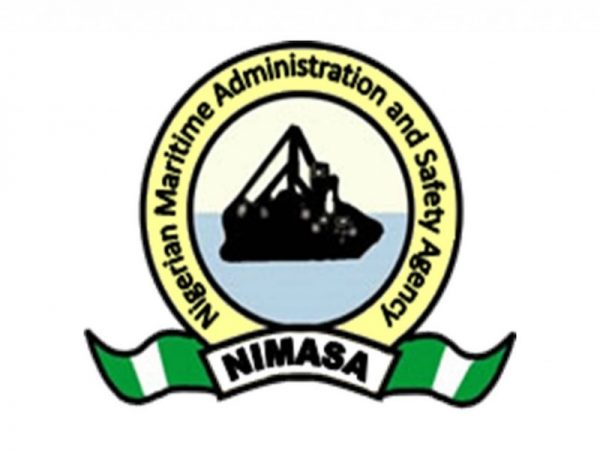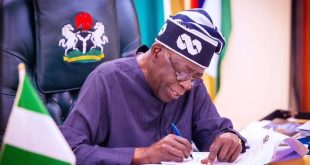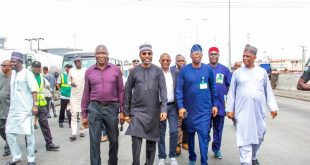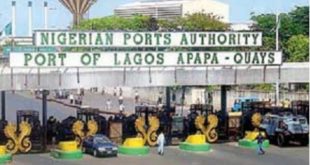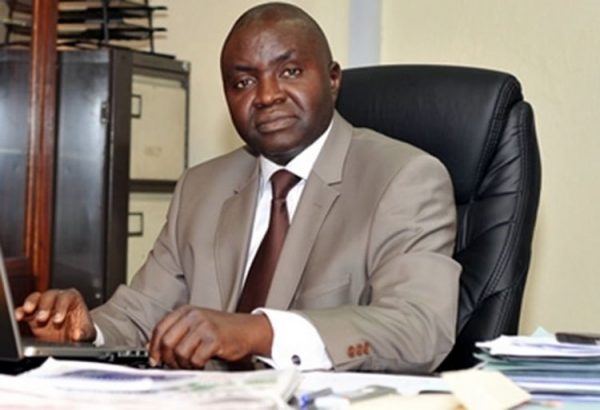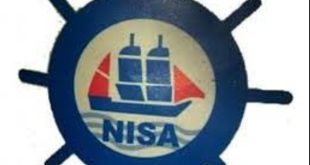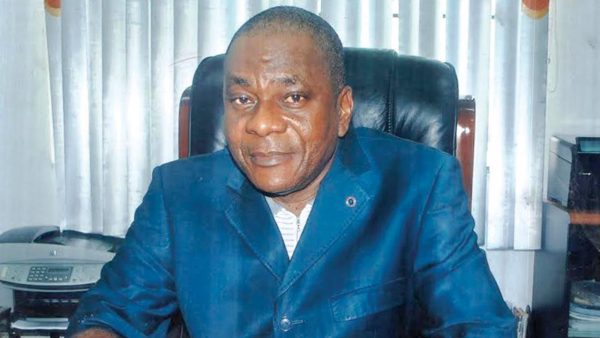- Lawyers, Journalists dismiss hasty projections
- Shippers doubt functionality of Onitsha, Baro river ports
By Kenneth Jukpor
The maritime industry 2019/20 forecast presented by the Nigerian Maritime Administration and Safety Agency (NIMASA) has continued to baffle experts as they express worry at the distortion and misrepresentation that the forecast poses in the industry, highlighting several aspects of the document for scrutiny.
Industry observers have referred to the maritime sector’s projected 10% contribution to the nation’s Gross Domestic Product (GDP) as misleading, noting that the mere fact that the sector was not measured as a separate economic activity attests to the fact that it was not really accounting for much.
Operators have also accused NIMASA of mastering the art of telling lies with statistics as the maritime industry couldn’t boast of Foreign Direct Investments (FDIs) in 2018, coupled with the state of the port environment and deficiencies of the Cabotage regime to account for the growth observed in the sector as reported by NIMASA.

Recall that NIMASA had projected 0.66 growth for oil tankers and 3.21 for non-oil tankers in 2018 and the actual growth rate was 0.71 for tankers and 3.0 for non-oil tankers as claimed by the agency, however observers are shocked as the maritime sector retrogressed in cargo throughput, while there were no meaningful investments in the sector to buttress the alleged growth. Similarly, the classification of tanker and non-tanker trade made the retrogression in the sector very glaring because there were no records or evidence of tanker and non-tanker trade growth in the forecast.
Indigenous operators also lamented that the nation witnessed the worst crisis in recent times as a result of the logistics constraints as the port access roads deteriorated to the barest, while the nation also fared poorer in seafaring and other aspects of maritime activities.
Whilst commending NIMASA’s efforts and intention, the Nigerian Maritime Law Association (NMLA) lamented that the parameters used in giving a broad-based forecast for Nigeria’s maritime industry by NIMASA was limited to total fleet which gives a misleading picture of the relevant maritime industry activities.
In the press release signed by the NMLA Secretary, Mr. Emeka Akabogu, the group said; “In the first place, the fleet size is not effectively classified into vessel types to give an indication into the nature of vessels that the growth is referable to. Though non-oil tanker fleet is stated as the key driver of significant growth, insufficient detail is provided as to the nature of this non-oil tanker fleet.
“Investors, many of whom we advise, will be keen to explore this industry segment with fuller details, particularly in view of historical apathy for investment in non-oil vessels. The reference to non-oil tankers is particularly curious, as the country is not known for any non-oil/gas cargo of significance that will drive the projected growth. NIMASA’s data will be of greater value if it is coupled with a more detailed reference to the types of vessels to drive the projected growth.
Noting that the 2018 forecast factored regulatory impetus to be derived from legislative enactments which were to come on stream in 2018, NMLA stressed that the five proposed Bills mentioned are still under legislative or executive consideration, resulting in a repetition of 2018 expectations in the 2019 forecast.
Amongst pending Bills are the Suppression of Piracy and other Maritime Offences Bill, National Transport Commission Bill, Petroleum Industry Governance Bill, Coastal and Inland Shipping (Amendment) Bill, Ports and Harbours Bill.
While appraising the 2019 forecast, the Director General of NIMASA, Dr. Dakuku Peterside stated that it is expected that the Suppression of Piracy and other Maritime offenses Bill (Anti-Piracy) will be passed into law within the margin of the 8th National Assembly to provide a robust and detailed framework to criminalize and punish piracy and unlawful acts in the Nigerian maritime domain as well as give further expression to the relevant provisions of the International Maritime Convention on maritime security to which Nigeria is a party.
According to Dakuku, all these will provide the necessary assurance to foreign investors that Nigeria and the Gulf of Guinea to a large extent is a safe hub for International trade.
Meanwhile, in his appraisal of the 2019/20 maritime forecast, the President of the League of Maritime Editors and Publishers (LOMEP), Mr. Kingsley Anaroke lamented that the security challenges, absence of ocean-going vessels and abysmal performance of the Cabotage trade meant that the potentials for maritime sector’s contribution to GDP was minimal in 2018, noting that no change in policy has been achieved to support the projected 10% contribution to the nation’s GDP in 2019.
Anaroke accused NIMASA of peddling lies with statistics saying; “NIMASA must have learnt how to lie with statistics. Interestingly I’m aware of some of these strategies because I learnt it during a Master’s programme in the university”
Although, ‘How to Lie with Statistics’ is also a book written by Darrell Huff, where he revealed various tactics of presenting statistics for the general reader with the intention to achieve a particular agenda; Anaroke stressed that in NIMASA’s case there was no semblance of truth in its projection.
Also speaking on this issue, a financial expert, Mr. Johnson Chukwu said that contrary to expectations, the maritime sector of the Nigerian economy accounts for a very minimal contribution to the Gross Domestic Product (GDP).
Chukwu observed that even sectors like the entertainment industry had stronger share of the economy and accounts for only 0.24% of the GDP than the maritime sector.
According to him, “the basic thing about the maritime sector is that it is still not accounting for the net share of the GDP. If you look at the transport sector that grew more than 15%, its contribution to the GDP is less than 1%. The maritime sector currently account for very minimal contribution to the GDP”.
Speaking on the insinuations that the maritime sector in Nigeria is next to the Oil and Gas sector in terms of money it generates for the country, Chukwu who is also the Managing Director of Cowry Assets Management Limited said; “When you rank it behind the Oil sector, probably you are looking at the foreign exchange earnings or you are looking at the prospects but if you look at the contribution to the GDP, its contribution is still inconsequential. It is not even measured as a separate economic activity, so that will show you that it is not really accounting for much. Even sectors like the entertainment industry has stronger share of the economy and accounts for only 0.24% of the GDP than the maritime sector”.
In another development, Shippers have described the Onitsha river port and the recently commissioned Baro river port as fair-weather projects, lamenting that the ports which have been rehabilitated by the National Inland Waterways Authority (NIWA) have been placed under lock and key.
Recall that the Onitsha River Ports Complex rehabilitated by NIWA at the cost of N4.6 billion while President Muhammadu Buhari had commissioned the Baro River Port built at the cost of N6billion a fortnight ago.
Speaking with MMS Plus on the viability of these projects, the President of the Shippers’ Association Lagos State (SALS), Rev. Jonathan Nicol, noted that both ports wouldn’t thrive outside the rainy seasons, even as he indicted NIWA for its inability to give the right advice and direction on the feasibility of the projects.
According to Nicol, River Niger is the source of water for both ports its natural deficiency, which is very low draft, especially during the dry season when it may not be able to take barges.
He noted that there is little draft between Pattani and Onisha during the rainy season, which brings about large heaps of sharp sand during the dry season, which inhibits easy navigation.
“River Niger has its course and during the dry season, the draft goes very low that it cannot allow the use of barges. Between Onitsha and Pattani can only thrive during the rainy season and during the dry season, you see heaps of sharp sand on the areas that have been dredged, which is a natural occurrence, which one has little or no control over. It is only when you build an infrastructure that can control this natural flow of sand so as to make for free flow of water all through the rainy and dry seasons from Onitsha to Lokoja, then to Baro and so on that you can now have the draft that can take barges because the Onitsha area of the river suffers the same fate, which negatively affects the river port” he said.
 MMS PLUS NG – Maritime, Aviation, Business, Oil and Gas News Online Newspaper with coverage in Maritime, Oil and Gas, Aviation, Power and Energy as well as Financial News
MMS PLUS NG – Maritime, Aviation, Business, Oil and Gas News Online Newspaper with coverage in Maritime, Oil and Gas, Aviation, Power and Energy as well as Financial News

